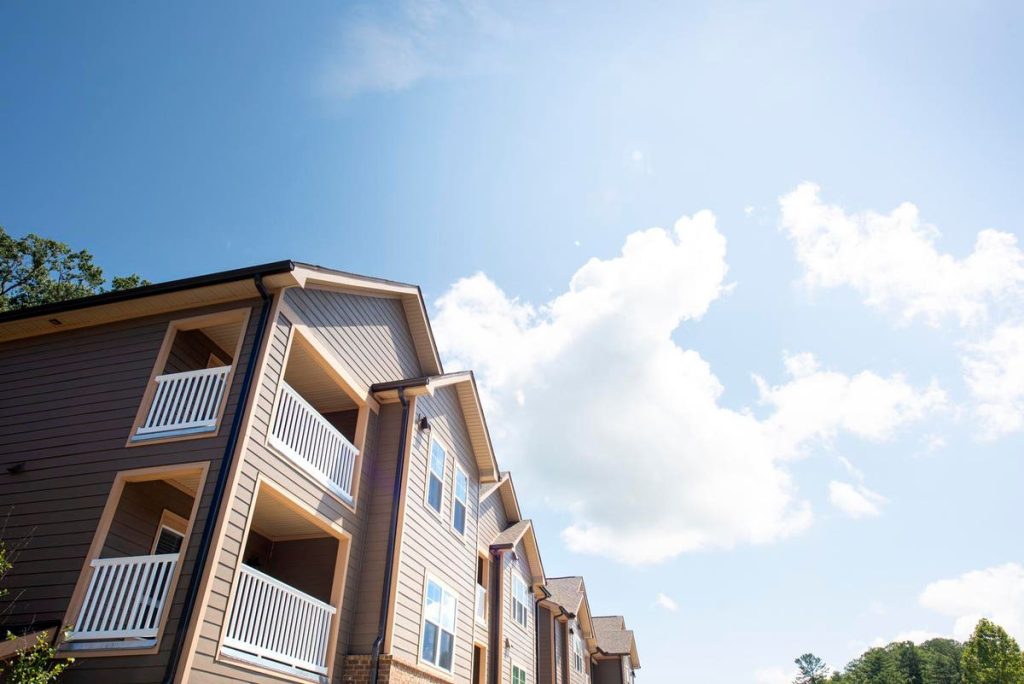Rema Matevosyan, Co-founder and CEO of Near Space Labs.
In recent years, the impacts of climate change have become increasingly visible. One of the more evident changes is the rise in occurrence and severity of weather events, such as hurricanes, droughts, floods, heatwaves and wildfires. This has a considerable effect on the insurance industry, affecting both insurers and their customers.
In 2021, 1 out of every 10 homes in the U.S. was affected by extreme weather events, causing the P&C insurance industry to pay out approximately $45 billion in claims. While claims losses increased for insurers, losses also increased for consumers. According to Nationwide, 2 out of 3 homes in the U.S. are underinsured by 22%, leaving consumers to pay millions out of pocket in the case of a catastrophe.
For years, the insurance industry has pursued a strategy of risk transfer—something that is no longer viable. In light of this, I believe proactive risk mitigation using the latest geospatial data can encourage insurers to enhance their existing procedures and adopt measures that effectively prevent future losses while fostering the development of resilient communities.
The Solution: Risk Mitigation
Risk mitigation is taking preventative actions to reduce the likelihood of future claims, or reducing the severity of such claims. These preventive actions can encompass various actions like undertaking important repairs, managing encroaching vegetation and “hardening” homes by upgrading building exteriors to resist the ravages of extreme weather.
Of course, all of these measures come with associated costs, mostly shouldered by the homeowner. However, insurance companies can contribute by providing incentives to homeowners who undertake preventative actions, such as reduced premiums. Now may be an appropriate time for insurance companies to adopt a significantly more proactive position, for example through cash incentives, which would ultimately be recouped by the insurer through reduced future claims.
Finding Opportunities
The initial challenge for insurers is identifying where they can implement risk mitigation incentives within their homeowner policy portfolio. Carriers invest substantial resources to understand and price for risks when establishing a policy, but neglect reevaluation of property risk, often for many years. That’s where geospatial imagery becomes valuable.
Companies, like the one I’ve founded, provide high-resolution, high-frequency imagery from the largest zero-emission balloon fleet in the stratosphere. Reaching up to 85,000 feet, they’re able to provide a unique vantage point of the Earth’s surface, including areas affected by extreme weather events.
By leveraging high-resolution, high-frequency imagery, insurers can gain access to a comprehensive view of the liabilities associated with insured properties and the environment around them. This insight gives carriers the ability to pinpoint the properties most susceptible to the effects of extreme weather, enabling them to work with the homeowner to mitigate risk by taking preventive action.
Examples Of Risk Mitigation Best Practices
An instance of risk mitigation best practices is evident with the case of old or damaged roofs, which can potentially lead to more significant problems in the future. By leveraging highly refreshed imagery, the carrier can monitor changes in the roof’s condition over time. If minor damage is observed, the carrier can proactively reach out to the policy holder with incentives to repair or upgrade the roof, mitigating future risk.
Secondly, the presence of encroaching vegetation and overgrowth hazards on properties increases the risk of fires. By utilizing imagery with regular refresh rates, carriers can monitor evolving vulnerabilities and proactively reach out to policyholders to encourage vegetation removal by taking advantage of local fire department subsidies or grants, reducing the likelihood of future property losses or damages.
What To Look For From An Imagery Partner
Once risk mitigation practices and procedures are established, the data that drives that process becomes crucial for effective decision-making. Your imagery partner should be evaluated for the completeness, quality and consistency of their imagery. Insurance companies should search for the following in an imagery partner:
1. 100% Coverage: Reduce gaps in data with access to imagery spanning your entire portfolio across all U.S. metropolitan areas, suburbs and rural locations.
2. High-Frequency Captures: You should depend on the most up-to-date information available with data refreshed, at least every 90 days.
3. Consistent, High-Quality Imagery: This imagery needs to be interpreted by AI and analysis platforms, so make sure every single image you use is fit for purpose and doesn’t break mission critical algorithms that are designed to monitor changing risk.
4. Integration: Your preferred imagery partner should also demonstrate ease of integration with either a proprietary, in-house analytics platform or third-party enterprise platform that monitors and alerts for changing risk attributes.
Finally, it’s now more important and appropriate than ever before to prioritize the adoption of zero-emission technologies. In my opinion, it is counterproductive to invest in pollution intensive solutions that exacerbate the very challenge that carriers and homeowners are suffering from. Therefore, in order to meet environmental, social and governance goals, carriers must partner with sustainable Earth imaging solutions.
After implementing imagery into risk mitigation workflows, insurers can feel empowered to make more confident decisions, proactively mitigate risks caused by climate change and build stronger, long-term relationships with policyholders.
Conclusion
As weather events become more frequent and severe due to climate change, insurers must continuously innovate and explore preventative processes and strategies, such as incentivizing homeowners to harden their home, to mitigate risks effectively.
In turn, homeowners will better protect their homes and communities, and reduce risk to life and the likelihood of catastrophic damage to their properties and businesses.
It is vital for insurance providers to leverage powerful data inputs and forward-thinking technology that support the development of risk mitigation practices that safeguard their customers, and encourage resilience in the context of changing climate.
Forbes Business Council is the foremost growth and networking organization for business owners and leaders. Do I qualify?
Read the full article here









